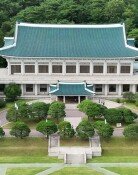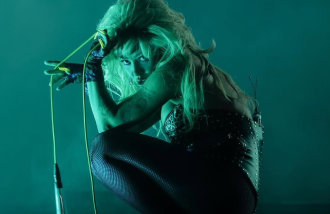[Opinion] Conspicuous Consumption
[Opinion] Conspicuous Consumption
Posted March. 01, 2007 08:00,
In the movie Back to the Future, a girl living in the 1950s assumed that the name of a boy from the future was Calvin, because of the Calvin Klein logo in his jeans.
In the past, labels were placed in the inside of clothes, but today, designer names are often placed in the outside of shirts, ties, blouses, and pants, as if to let those wearing the clothes show off the brand. For example, someone wearing clothes with a Ralph Lauren trademark placed outside seems to boast that he or she is rich enough to buy designer clothes. Such consumption is called conspicuous consumption.
Conspicuous consumption was first introduced by economist Thorstein Veblen in his book The Theory of Leisure Class. Examples of the behavioral characteristics depicted by the term are commonly found in both the east and west. It is not difficult to open the door of a car, but the rich have such menial tasks done for them. Conspicuous consumption also includes dog parties thrown by noblewomen for their pet dogs and a rich man losing hundreds of thousands of dollars at a casino and still managing to smile as he knows he has plenty more. In Korea, examples of conspicuous consumption are traditional topcoats worn by the so-called yangban, the nobility in the Joseon Dynasty, to be viewed separately to the manual laborers because it is impossible to do manual works wearing it. The excessively long tobacco pipes used in the past, for which the smoker needed help to light, were another example of conspicuous consumption in Korea. Buying overly expensive apartments in Gangnam, Seoul, can also be described as conspicuous consumption. The opportunity cost of living in a 40-pyeong apartment that has market value of about 2 billion won is 8.3 million won per month at a five percent annual interest rate.
Even animals show behavior synonymous with conspicuous consumption. A peacock`s long, extravagant feathers, a deers large antlers, and a swans flawlessly white appearance only serve to hinder their survival. Evolutionary biologists say genes of males of these animals carry on because they succeed in attracting females by displaying they have adequate survival capacity despite such hindrance. There seems to be no difference between human beings and animals when it comes to conspicuous consumption.
Luxury goods have recently replaced foreign wines as the most favored souvenirs from trips abroad. Most of these goods are said to be handbags. A recent issue of a foreign newspaper stated, The psychology of a woman who wants to buy a luxury designer bag is the same as that of a man who wants to buy a Mercedes-Benz. Handbags, in particular, can be used to boast of ones success more easily at a much lower cost than a luxury car. Therefore, it is understandable why some women are so desperate to purchase and flaunt a luxury bag.
Heo Seung-ho, Editorial Writer, tigera@donga.com



![돈 뺏어간 96%가 자식·요양사·지인… ‘양자’ 신고해 상속 노리기도[히어로콘텐츠/헌트②-下]](https://dimg.donga.com/c/138/175/90/1/wps/NEWS/IMAGE/2025/12/15/132967464.1.jpg)



